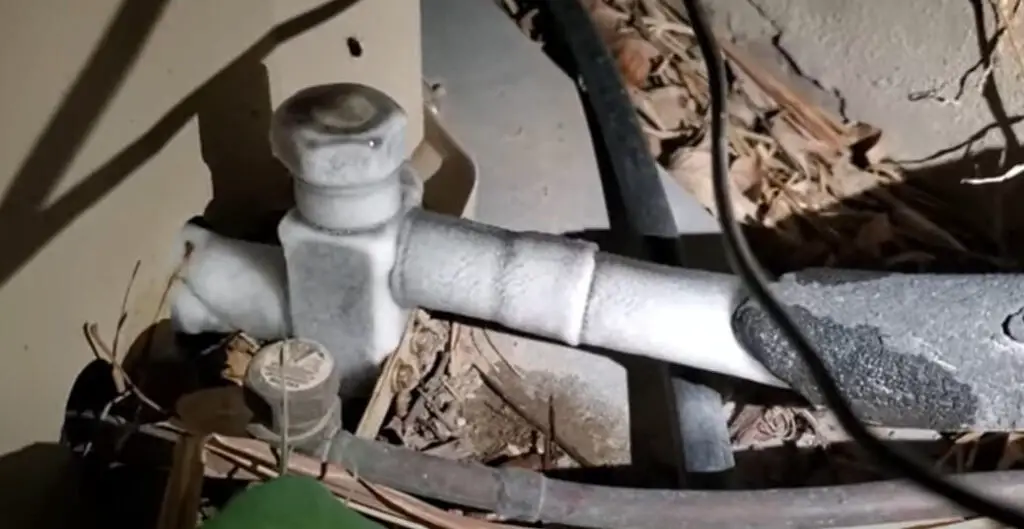Just how do you really feel about Why Is Ice On My Outside Air Conditione?

Intro
Uncovering that your AC pipe is frozen can be concerning, particularly during hot summer months when you rely on your air conditioning system one of the most. Recognizing what to do in such a scenario is critical to stop more damages to your cooling system and guarantee your comfort inside.
Recognizing the Causes
A number of elements can contribute to the cold of an air conditioning pipe. Recognizing these causes can aid you attend to the problem efficiently.
Absence of Airflow
One typical cause of an icy AC pipeline is inadequate airflow. When the air flow over the evaporator coil is restricted, it can trigger the coil to go down below freezing temperature, leading to ice development on the pipeline.
Low Refrigerant Levels
Inadequate cooling agent levels in your a/c system can additionally result in a frozen pipe. Low cooling agent degrees can cause the stress in the system to drop, resulting in the cold of moisture on the evaporator coil.
Winter Conditions
In colder environments, freezing temperatures outside can add to the freezing of air conditioning pipes. If your AC device is not correctly insulated or if there are leaks in the ductwork, cool air can infiltrate the system, triggering the pipeline to freeze.
Dirty Air Filters
Unclean or clogged air filters can restrict air movement in your AC system, causing numerous concerns, consisting of a frozen pipe. It's vital to replace or clean your air filters regularly to guarantee appropriate air movement and protect against ice build-up.
Signs of a Frozen Air Conditioner Pipe
Acknowledging the signs of an icy air conditioning pipeline is important for prompt activity.
Reduced Airflow
If you observe a considerable decrease in air flow from your vents, it can suggest an icy pipeline.
Ice Buildup on the Pipe
Visible ice build-up on the refrigerant line or the evaporator coil is a clear indicator of an icy AC pipe.
Strange Sounds from the Unit
Unusual audios, such as hissing or gurgling, coming from your air conditioning device can signify that there's ice present on the pipe.
Immediate Actions to Take
When faced with a frozen AC pipe, it's necessary to act swiftly to avoid more damages to your air conditioning system.
Switching off the air conditioner
The first step is to turn off your air conditioning system to stop the system from running and exacerbating the concern.
Looking for Blockages
Check the area around the interior system for any obstructions that may be obstructing air flow, such as furniture or curtains.
Thawing the Pipe
You can make use of mild approaches like placing towels soaked in warm water around the frozen pipeline to aid thaw it gradually.
Safety nets
Taking safety nets can assist prevent future incidents of a frozen air conditioning pipe.
When DIY Methods Fail
If your attempts to thaw the pipeline or address various other problems are unsuccessful, it's time to contact a professional.
Importance of Hiring a Professional HVAC Technician
A certified HVAC professional has the expertise and devices required to detect and fix issues with your AC system securely and efficiently.
Regular Maintenance Checks
Arrange regular maintenance consult a specialist HVAC technician to guarantee that your air conditioner system is running successfully.
Changing Air Filters
Routinely replace or clean your air filters to prevent airflow restrictions and maintain optimal performance.
Protecting Exposed Pipes
If your air conditioning pipes are exposed to cool temperature levels, take into consideration protecting them to avoid freezing throughout cold weather.
Looking For Professional Help
If DIY techniques fail to deal with the issue or if you're unclear regarding how to continue, it's finest to seek help from a qualified HVAC technician.
Final thought
Taking care of a frozen a/c pipe can be an irritating experience, however recognizing exactly how to react can help minimize damage and recover convenience to your home. By comprehending the reasons, acknowledging the indicators, and taking punctual action, you can effectively address the problem and avoid future events.
What to Do If Your AC Line Is Frozen
Make Sure All Supply and Return Air Vents Are Open
If you notice problems with airflow, the first thing you should do is check your supply and return vents. Supply vents distribute clean, conditioned air throughout your home. As this air becomes stale, it’s pulled into the return vent, where it’s reconditioned before being sent back out through the supply vent.
When these vents are closed, air won’t flow in the home. Before examining your AC, check the vents in every room and ensure they’re all open.
Check for a Dirty Air Filter
Another possible cause of limited airflow is a dirty air filter. Your air conditioner’s filters catch elements you don’t want to breathe in, such as dirt and dust. Over time, filters can become clogged, ultimately blocking air from flowing in and out. The lack of airflow can then cause the entire coil to freeze and will completely restrict any air from moving through it. The AC may need to be powered off for one to two days to allow the coil to thaw after replacing the filter to allow proper functioning of the unit. This debris can also accumulate on your AC’s evaporator coil, requiring a more serious repair. In general, air filters should be cleaned regularly (about every two weeks).
Assess Your Outdoor Unit
In addition to checking your AC, assessing the outdoor unit is a good idea. Also known as the condensing unit, it works with your interior unit to release heat outside. An issue with the outdoor unit can result in rising internal temperatures.
Overgrown Shrubs or Clogged Leaves
From leaves and twigs to shrubs and debris, there’s no shortage of outdoor elements that can accumulate around your condensing unit. When these elements get lodged inside the unit, they can block airflow. Fortunately, removing the blockage can solve the problem.
Sounds of a Broken Fan
Shrubs and leaves aren’t the only things that can impede your outdoor unit’s airflow. If the fan is broken, the unit won’t be able to properly get rid of heat — which means the internal temperature won’t go down. First, make sure the fan is spinning. If it is, check for the following sounds of a broken fan:
- Buzzing
- Rattling
- Screeching
- Hissing
- Clicking
Preventative Measures
Nobody wants to deal with a frozen AC line. In addition to causing problems with your air conditioner, they require professional repairs. On the bright side, there are preventative measures you can take to help ensure this issue doesn’t arise in the first place.
https://www.coopergreenteam.com/blog/what-to-do-if-ac-line-frozen

I was guided to that editorial about Air Conditioner Frozen? How To Fix your Frozen AC Line through a good friend on another web page. Enjoyed reading our post? Please share it. Help someone else discover it. I am grateful for your time. Come back soon.
Contact
Comments on “Frozen AC Pipe - Causes and How to Fix the Problem”